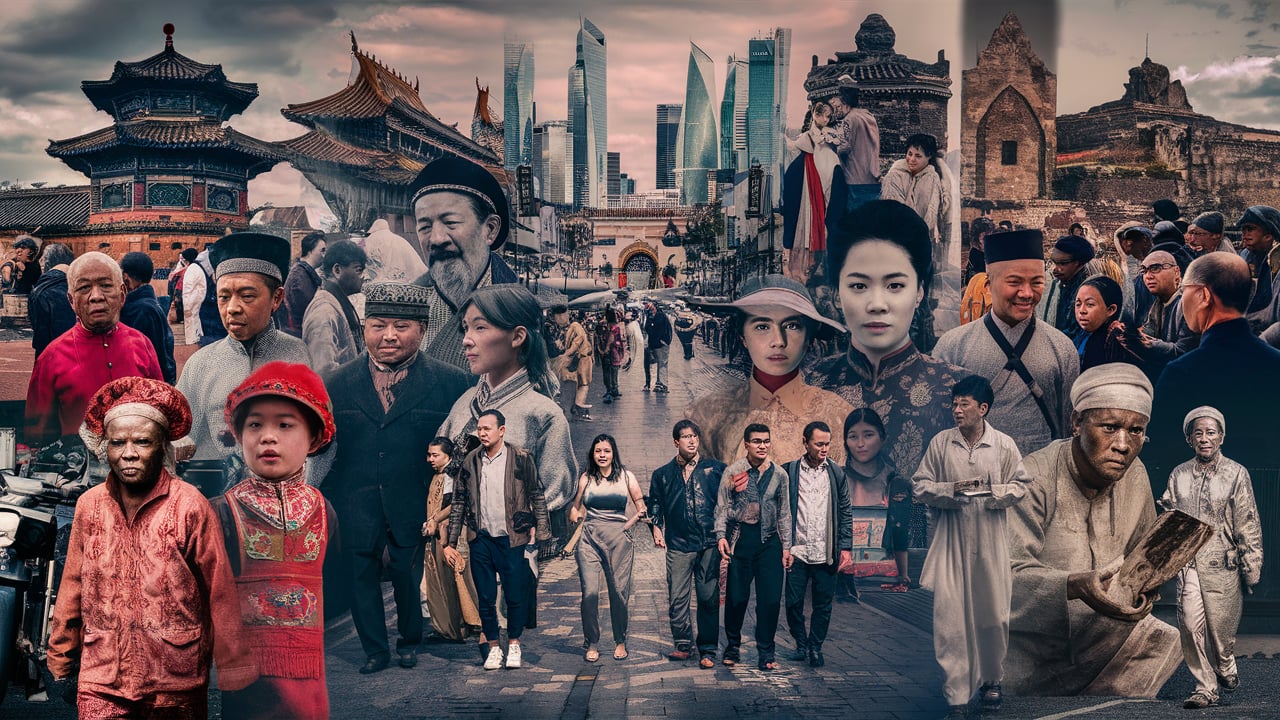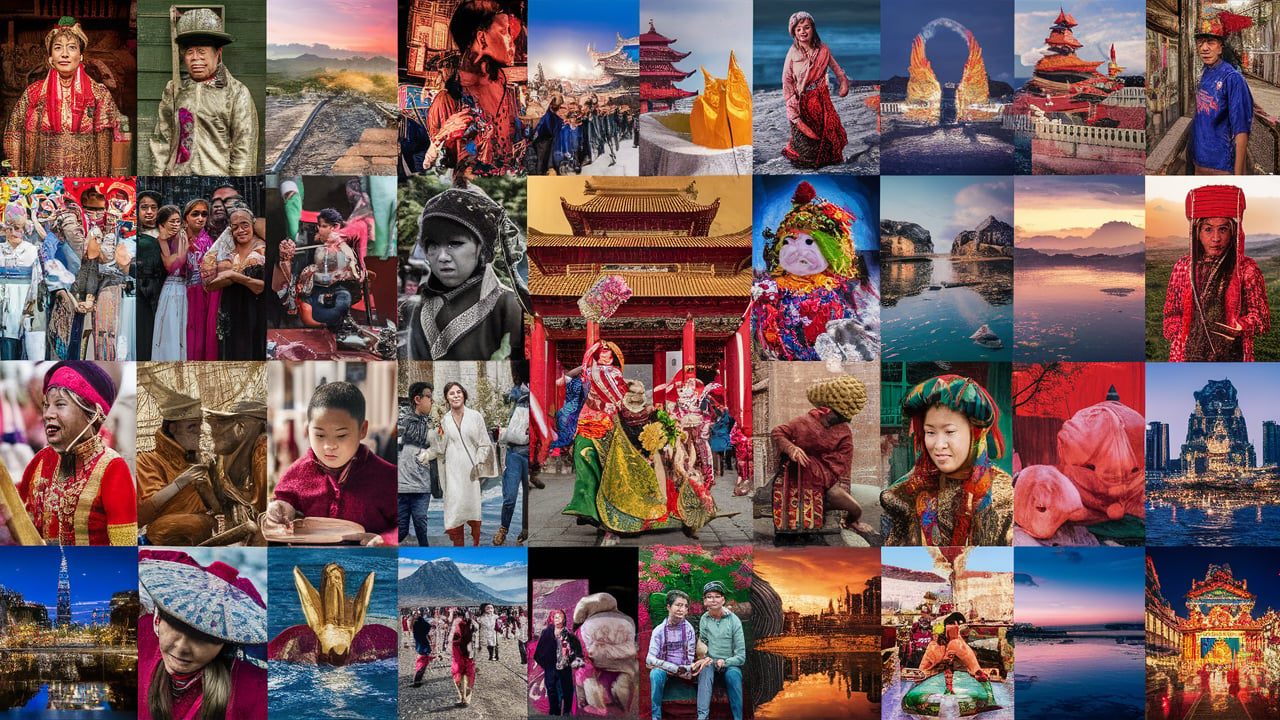Asia is the largest continent in the world and home to some of the most diverse cultures, religions, and languages. With over 4 billion people living within its boundaries, it’s no wonder that this fascinating part of the world is full of interesting facts. From its climate to its cultural heritage, there are many interesting aspects about Asia that many may not know. So what are facts about asia?
Geography.
- Largest Continent: Asia is the largest continent, covering about 30% of the Earth’s land area.
- Diverse Landscapes: From the vast deserts of the Middle East to the dense rainforests of Southeast Asia and the towering peaks of the Himalayas, Asia boasts an incredible variety of landscapes.
- Highest and Lowest Points: Asia contains both the highest point on Earth, Mount Everest (8,848 meters), and the lowest, the Dead Sea shore (-430 meters below sea level).
Population.
- Most Populous Continent: Asia is home to approximately 4.7 billion people, accounting for about 60% of the global population.
- Diverse Cultures and Languages: Asia is incredibly diverse, with thousands of ethnic groups and languages. Mandarin Chinese is the most spoken language, followed by Hindi, Bengali, and Japanese.
Economy.
- Economic Powerhouses: Asia includes some of the world’s largest economies, such as China, Japan, and India. China is the second-largest economy globally, while Japan ranks third.
- Rapid Growth: Many Asian countries, including South Korea, Singapore, and Vietnam, have experienced rapid economic growth and development in recent decades.
History.
- Ancient Civilizations: Asia is the cradle of some of the world’s oldest civilizations, including Mesopotamia, the Indus Valley, and ancient China.
- Major Religions: Asia is the birthplace of major world religions such as Hinduism, Buddhism, Islam, and Sikhism.
Biodiversity.
- Rich Wildlife: Asia is home to a wide range of wildlife, including endangered species like the giant panda, Bengal tiger, and orangutan.
- Varied Ecosystems: The continent’s ecosystems range from the Arctic tundra in Siberia to tropical rainforests in Indonesia and Malaysia.

Culture.
- Traditional Festivals: Asia is known for its vibrant festivals, such as Diwali in India, Chinese New Year, and the Japanese Cherry Blossom Festival.
- Culinary Diversity: Asian cuisine is diverse and world-renowned, with each region offering distinct flavors and dishes. Popular foods include sushi from Japan, dim sum from China, and curry from India.
Technological Advancements.
- Innovation Hubs: Cities like Tokyo, Seoul, and Shenzhen are global technology and innovation hubs, leading advancements in electronics, robotics, and telecommunications.
- Space Exploration: Countries like China and India have made significant strides in space exploration, with missions to the Moon and Mars.
Environmental Challenges.
- Pollution and Climate Change: Rapid industrialization has led to significant environmental challenges, including air and water pollution and deforestation.
- Natural Disasters: Asia is prone to natural disasters such as earthquakes, tsunamis, typhoons, and volcanic eruptions due to its geographical location.
Facts about Asia – Overview.
Asia is the largest continent in the world, both in terms of area and population. Stretching from Europe to the Pacific Ocean, this vast region encompasses more than 30% of the world’s total landmass and is home to nearly 60% of its population. It consists of 48 countries and numerous autonomous regions, each with its own distinct culture, language and history.
Asia has played an important role in human history since ancient times, producing many influential cultures that have shaped our modern way of life. It has been a source of major economic growth over the past few decades as well, with countries like China and India leading much of the global economy today.
From its bustling megacities to its lush rainforests and diverse wildlife, Asia offers visitors a unique experience that can’t be found anywhere else on Earth.Lets look at the geographical facts about asia?
Also read – Facts about Abraham Lincoln.
Geography: Landforms, Countries.
It is no secret that the continent of Asia is one of the most diverse and fascinating regions in the world. In terms of landforms, this area presents an incredible array of options ranging from towering mountains to vibrant jungles. The highest mountain range in the world, the Himalayas, makes up part of Asia’s geography as do many other majestic mountain ranges like The Hindu Kush and Pamir Mountains.
Additionally, there are expansive deserts such as those located in Mongolia and Kazakhstan as well as tropical rainforests like those found on the islands in Southeast Asia.

Each country that makes up this large continent further adds to its extraordinary variety with unique cultures, climates and beautiful landscapes that draw countless numbers of tourists every year. Facts about Asia include some truly remarkable information about this expansive region. Lets look at the cultural facts about asia?
Culture: Religion, Languages.
Asia is home to many different cultures, religions, and languages. One of the most interesting facts about Asia’s cultural diversity is that it is home to two-thirds of the world’s population. This means that within Asia exists a multitude of cultural differences. With regards to religion, there are many within Asia including Hinduism, Buddhism, Islam and Christianity.
While some countries have one predominate religion such as India (Hinduism) or China (Buddhism), other countries within Asia have a diverse religious landscape where multiple religions coexist peacefully together.
In addition to religion, language also varies greatly in Asia with over 2,300 spoken languages throughout the continent. Countries like Japan only recognize one official language whereas other countries like India have 22 different official languages as well as hundreds more dialects across its region. But what are economic facts about asia?
Also read – Whats the most eaten food in America?
Economy: GDP, Industries.
Asia is home to many of the world’s most dynamic and fastest-growing economies. According to the International Monetary Fund, Asia accounts for nearly 40 percent of global Gross Domestic Product (GDP), a measure of the value of goods and services produced by an economy over a period of time. It is clear that Asian countries are major players in global economics, with highly advanced industrial sectors and significant technological prowess.
The size and scope of Asia’s industries are impressive – China alone boasts some 600 million industrial workers, about three times more than the entire population of the United States!
The largest Asian economies, such as China, Japan, India, South Korea and Indonesia have high levels of manufacturing output, making them important players in global trade. These countries also host robust service sectors including finance and IT related activities which add further to GDP growth.
Population: Growth Rate, Largest City.
When it comes to population, Asia is a region of immense growth rate. According to 2018 estimates by the United Nations Population Division, the continent’s population was 4.5 billion and accounts for about 60 percent of the world’s total population. This trend is expected to continue into the future as it is projected that Asia will account for 64 percent of the world’s total population in 2050 – an increase from its current share.

The largest city in Asia in terms of population is Tokyo with over 37 million people living within its borders. There are also other cities such as Mumbai and Delhi which have large populations close to 28-29 million respectively. These cities are renowned for their bustling streets and vibrant culture, making them popular tourist destinations.
Also read – Whats in American Dream Mall?
Natural Resources: Mining, Agriculture.
Asia is a continent that is home to some of the world’s most abundant and diverse natural resources, particularly in the areas of mining and agriculture. Mining lies at the heart of many countries’ industrial development and economic growth, with tremendous mineral deposits located across Asia. For instance, China has long been known for its coal reserves and produces almost three-fourths of the world’s total supply.
Additionally, India is the second largest producer of gold in such countries as Russia and Mongolia while being one of only two countries on earth to contain cesium-137. Furthermore, Japan sits atop a wealth of rare metals such as niobium, gallium and scandium as an additional resource for economic stability. Agricultural products are also abundant across Asia with rice being one staple crop in particular which drives much regional production.
Tourism: Major Destinations.
It is undeniable that Asia is one of the most popular and heavily trafficked tourist destinations in the world. This fact can be attributed to its vibrant culture, unique cuisine, and breathtaking sights and scenery. According to various studies on international tourism, Asia has a 44% share of all global tourists. Facts about Asia clearly point out why it is such an attractive destination for tourists from all over the world.
Asia boasts of some incredibly diverse landscapes ranging from dense jungles to snow-capped mountain ranges with deep valleys. There are also numerous beach resorts, temples, museums and monuments spread across the continent making it ideal for adventure seekers as well as history buffs who want to explore different parts of the continent at their own pace.
Although there are many countries in Asia offering different experiences for everyone, some major destinations include China, India, Thailand and Japan among others.
Also read – Facts About Argentina.
Politics: Countries & Governments.
When talking about politics, the facts about Asia are particularly interesting. With 48 countries and countless territories, this continent has a history that spans thousands of years and a population of over 4 billion people.
Governments in Asia range from authoritarian to democratic, reflecting the diversity of nations within this vast landmass. Political systems have been highly influenced by religious beliefs, such as Buddhism, Islam and Hinduism.

Many Asian countries have adopted similar models of government since World War II when many former colonial powers withdrew from the region. Most governments now follow some form of Parliamentary system with an elected Prime Minister who oversees most aspects of government policy-making.
In addition to parliamentary systems, some Asian countries also still retain their traditional forms of rule such as monarchy and military rule.
Also read – Facts About Australia.
Wildlife: Endangered Species.
Facts about endangered wildlife in Asia are alarming. Countries like Indonesia, China, India and Myanmar are the most affected by extinction of species due to their large animal populations.
In Indonesia alone, there are roughly 130 species of mammals that have been identified as endangered or critically endangered; this includes tigers, rhinos and elephants. In China, more than 950 animal species are threatened with extinction including bears and pandas.
India also has many native animals under threat such as the snow leopard, musk deer and Asiatic wild buffalo. Lastly, Myanmar is home to over 250 endemic species of birds but sadly these numbers continue to dwindle due to deforestation and habitat destruction caused by humans in the region.
It is essential that we take steps towards conserving vulnerable wildlife in Asia before they completely disappear from our planet.
What are 10 countries in Asia?
The Asian continent is home to a vast number of countries, each with its own unique culture and history. From the bustling streets of Tokyo to the tranquil beaches of Bali, Asia offers travelers an almost endless array of destinations. When considering which nations are located in this region, here are just 10 that should be considered:
Japan is often at the top of many travelers’ bucket lists as it’s a fascinating nation with a huge variety of activities available. From ancient temples and shrines to modern skyscrapers and tech-savvy cities like Tokyo or Osaka; there’s something for everyone in Japan.

Also read – Facts About Africa.
Which country is No 1 in Asia?
The debate as to which country is No 1 in Asia has been raging for years. Each country has its own unique traits that make it stand out from the rest, making it difficult to determine who should be crowned the number one spot.
India and China have long been considered the front runners due to their massive population sizes, economic output and political influence. However, when looking at the overall picture of development, Qatar stands out from other countries in Asia.
Qatar is a small Middle Eastern nation with vast oil resources that has become a powerhouse in recent years. It ranks highly on most social and economic indicators such as education, health care and human rights protection compared to its regional counterparts. Its economy also continues to boom despite sanctions imposed by other countries due to its involvement in international politics.
In conclusion:
It can be said that Asia is a geographically diverse region that is rich in culture, people, resources and potential. There are many facts about Asia that everyone should know in order to better understand the region. For instance, it is the largest continent in the world by population with nearly 60 percent of the world’s population living there.
Additionally, most of its countries have experienced rapid economic and social development over the last several decades. Furthermore, it has some of the oldest civilizations in human history and contains a wide variety of religions and languages. All in all, these facts reveal that Asia has an incredibly complex history which makes it an interesting and intriguing place to explore further.
I am an accomplished author and journalist at Fact Finders Company . With a passion for research and a talent for writing, I have contributed to numerous non-fiction titles that explore a wide range of topics, from current events, politics and history to science and technology. My work has been widely praised for its accuracy, clarity, and engaging style. Nice Reading here at Fact After Fact.








